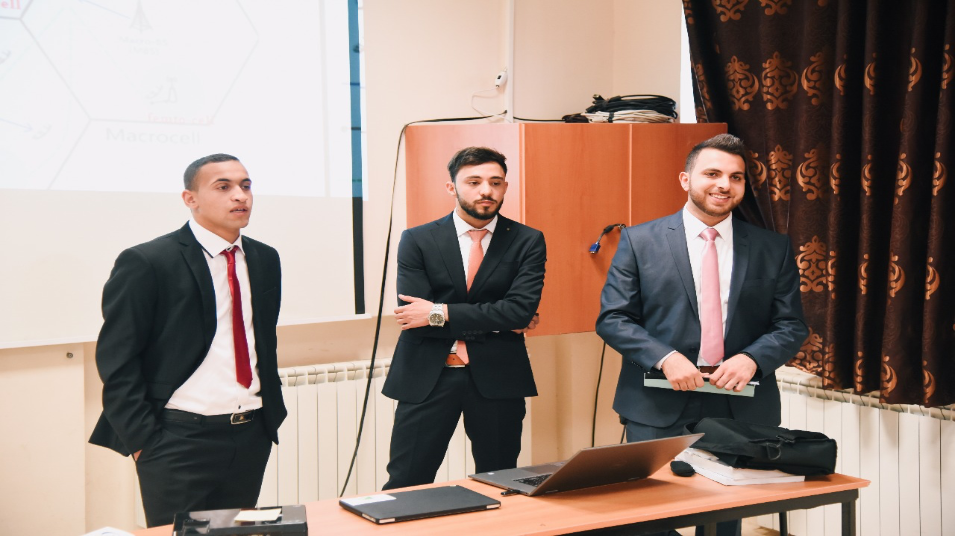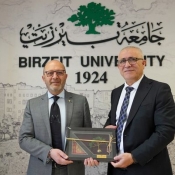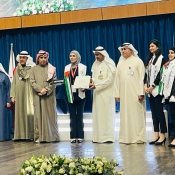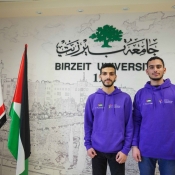Students’ 5G network model balances user load, quality of service
Osama Mohammad, Mousa Majdi, and Rajai’ Imsaih, three students in the Department of Electrical and Computer Engineering at Birzeit University, devised a model for a 5G telecommunications network that sidesteps the deficiencies of the older fourth-generation network model.
The model was part of the students’ capstone project, a ten-month endeavor supervised by Aziz Qaroush, an instructor in the Department of Electrical and Computer Engineering.
“We observed the ever-increasing number of users connected to cellular networks, and figured that, at this rate, the quality of the service they’re receiving is inadequate,” said Mohammad. “This led us to develop a model of a fifth-generation heterogeneous network that utilizes a macrocell supported by a number of femtocells or small cells– as opposed to the monolithic model of 4G networks.”
What sets the students’ model apart is the novel method by which it associates a user with a network. The students employed artificial intelligence methods, coupled with the greedy algorithm, game theory algorithm, single objective genetics algorithm, and multi-objective genetics algorithms, to strike a balance between quality of service, energy consumption, and service provider profitability.
“We built our own topology and looked for thermal noise that is normally only visible to the network equipment itself,” noted Majdi, who further added that the team applied their optimization techniques to the data they sourced, and charted the best-case scenario when utilizing each technique.
Qaroush emphasized the innovative way the team tackled the issue of user-network association, saying that the project is the first of its kind to utilize multi-object optimization methods.
“The results are very satisfactory within the limits of our research project,” observed Qaroush. “These results can be used to guide Palestinian cellular operators on how to react, and prepare, for the deployment of 5G networks in the future or for times when their networks are stressed with a multitude of users.”









